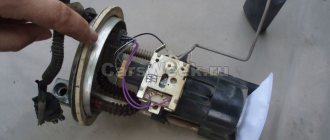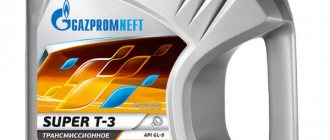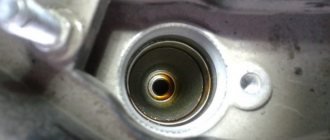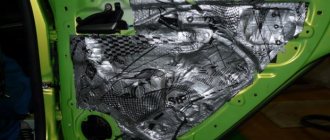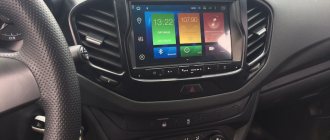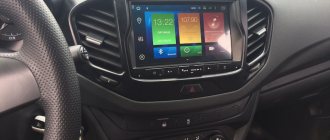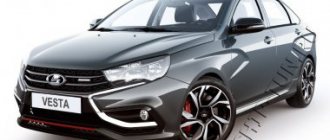Review of VAZ 1.6 CVT (2020)
Actually, this is not a review yet, but first impressions. It started when Sorento started acting up, and it was decided to buy a new car. Because everything happened quite suddenly, the budget was extremely limited. Therefore, inexpensive cars that fit into straps were considered.
So the requirements:
1) Not Chinese (well, I can’t step over myself and buy Chinese yet)
2) Even if the loan is not big
3) Roomy interior (hatchback or station wagon, sedans were not considered in principle)
4) The box is neither robotic nor mechanical (I didn’t like the first one on the test, I just don’t want to go back to mechanics)
5) Not a large car (the barn itself is no longer needed)
So the lineup included: Nissan Qashqai, Hyundai Creta, Renault Arcana/Capture/Sandero, Lada Vesta and X-ray
The KIA brand was not included in the lineup because of the radios (I am terribly annoyed by this tablet-type radio that sticks out on the dashboard like a pimple. IMHO)
Qashqai - I liked it the most, but also the most expensive, the loan is large.
Creta - the loan turned out to be unpleasant
Arcana - I liked it, but the engine does not inspire confidence (for me personally)
Captur - I didn’t like the inside at all
Due to the retirement of crossovers, the frets and sanderos remained.
X-ray — it looks good, but I didn’t like the inside, even with the seat raised as high as possible, I felt uncomfortable behind the wheel, my wife couldn’t see anything at all because of the dashboard. Some kind of feeling, like in childhood, when you sit behind the wheel but see little in front.
Vesta SV Cross — we sat down and enjoyed it, how everything was thought out/logical, everything was intuitive. The trunk is large. It's not cramped inside.
We decided to watch Sandero to be as objective as possible. Sandero is just sad inside. The trunk is small, the same in small crossovers and X-rays. As a result, the Lada Vesta SV Cross was chosen.
Now about the first impressions of the new car. I will compare with Sorento and Dad’s Qashqai
The engine and variator are actually a Kashkaev pair (they put the Qashqai and Vesta batin next to each other, the markings on the engine and gearbox are identical) and you can’t expect any special results from it. But subjectively it drives more interesting than the Qashqai. Although it is useless to compare with the Sorento engine, its dynamics are much better.
The interior is not as large as the Sorento, but it is more spacious than the Qashqai, and the trunk is better. Although the finishing materials are oak and scratchy, and there are questions about some elements:
1) Which troll or squid came up with the layout of the power window buttons? If for some reason the driver's windows are moved far forward and you can open the rear windows without looking, but to open the front windows you have to reach. The button to open the passenger window is hidden behind the door handle.
2) All the same, the salon probably designed the squid, because the eyeglass case is made so that when you take the glasses out of it, you block your view with your right hand. It’s very inconvenient, why not hang the eyeglass case in the area of the lampshade and there’s room there.
3) The squid placed the cup holders behind the gearshift handle, again very inconvenient to take/put down drinks
4) Clamp the rear seat armrest - this is the Russian way. Is it really so expensive that it can only be supplied in the maximum configuration?
5) Personal kick, no start/stop button, you have to start it with the key.
Actually, I kicked it, now we will praise it.
First of all, I didn’t find any assembly jambs, the gaps are even, where it should be screwed - screwed, where it should be glued - glued
The interior is spacious both in front and in the back. I sit down quietly behind myself. The seat is adjustable with knobs in all ranges (I don’t like knobs). The back row folds into a flat floor and two people can sleep there, there is enough space. VAZ has provided raised floors to allow for such a transformation. In principle, you can make the floors yourself and save on equipment for those who don’t care about all sorts of rain/light sensors. Organizers are provided for the raised floors, thank God they are made of foam plastic, I added them to suit my needs. Actually, the ergonomics of the trunk itself are very well thought out; there are places where you can put all sorts of small things. I was able to hide everything that I carried in Sorento and nothing is visible, the trunk is free.
I like the appearance, both outside and inside. Very cool for a domestic car. Not inferior to foreign cars, and some are superior (IMHO)
The engine/gearbox pair is quite sufficient both in the city and on the highway, we drove to the dacha with a fully loaded car (5 people and a full trunk) and the climate control turned on, I didn’t notice any particular slowness, and not a Sorento, but the engine and gearbox work adequately, I don’t have to turn it too much has to. I turned the engine more actively on my father's car.
The filling is all the electrical gadgets that were in the Sorento, with the exception of the start/stop button. And some things have been improved (for example, heated windshield, and not just windshield wipers)
The music (I don’t have multimedia) seemed better than in Sorento, perhaps just new, but my wife and I liked the sound of the songs more.
So for now I’m not at all upset that I switched from Sorento to Vesta. Let's see what further operation will show.
The car owner shared his impressions of Vesta Cross on a CVT
Car enthusiast BlackChaplain from Omsk described at length his impressions of the Lada Vesta SW Cross on the drive2.ru forum. It captivated the author with its spacious interior, fairly large trunk, functionality and equipment. The latter is not surprising, since the maximum equipment is Luxe Prestige. 1.6 liter petrol engine with 113 horsepower.
The car owner began his review with the most controversial, in his opinion, the CVT. He notes that the car moves off smoothly from a standstill and does not rip even if the gas pedal is fully pressed. Because of this, acceleration is leisurely - 14 seconds to 100 km/h. But the car accelerates remarkably quickly, even with a full load. It turns out to change lanes and overtake in time. For a family car, the dynamics in the city cycle are quite good. The ride is comfortable, but the car owner also noted a minus. This is when, during a kickdown, the gearbox drops into first gear, and then there follows a failure in traction and a kick.
Both the stabilization system and traction control system performed well. The wheels don’t get buried in the snow, the variator doesn’t burn, and you can still get out of deep snow without outside help. Although it’s slow, it’s working. The car confidently picks up speed and moves smoothly, even if one wheel is on the snow and the other on the asphalt. The car owner has never had to use manual mode yet.
The author noted that the variator must first warm up before entering the mode. While the heating is ongoing, there is a barely noticeable vibration, which stops immediately upon reaching a certain temperature. As he writes, one can feel the transmission opening.
Many people doubt the reliability of the variator, since the Internet is full of stories related to its malfunctions. But the author is optimistic and confident in his mechanism, because he hopes that “childhood diseases” have already been corrected.
The engine, according to the author, is somewhat noisy, especially outside the car. In the cabin this is not felt so strongly, but only up to 3500 rpm, when it gradually turns from a pleasant rumbling into a roar. But there is no increased oil consumption, although according to the instructions this may well happen.
The electrical system, according to the author, is quite complex. The fuse box contains as many as 80 of them. There are too many lights in different parts of the car and heating systems, which, if you turn them all on at once, reduce engine speed.
The standard multimedia system is not the best, but it performs its functions perfectly. The sound of the music is not electric; bluetooth is detected immediately.
About the review. The rear camera is well illuminated, has a wide viewing angle and does not get covered in mud like the Lacetti that BlackChaplain previously drove. The standard navigation system came in handy twice when we had to get out of unfamiliar places and where there was no Internet. Light and rain sensors also make life easier.
The author has no complaints about the climate control, because the interior warms up quickly. Everything works in auto mode, which suits him quite well.
Read also: The owner of Granta found foam rubber in the wheel arch liners. I threw it away to prevent it from rotting - as a result, the interior was flooded with water.
The author was impressed by such a useful feature as cruise control with a speed limiter. He especially helped him when he was moving a car he had just purchased. The 1000 kilometer haul turned from a long and tedious trip into an easy walk. It doesn't cause any problems, it turns on easily and works perfectly.
Comparing the current car with his previous car, the Lacetti, the author notes that the Lada Vesta throws much less dirt. He attributes this to sophisticated aerodynamics.
There are quite a few disadvantages noted by the owner of Lada Vesta.
He didn't like the side pillars. They seemed too wide and blocked the view. But, over time, he still got used to them.
There's nowhere to put your left foot. During all the time I have been using it, I have not been able to find a more or less acceptable and comfortable position for it, and on a long trip my leg becomes numb.
Stowing large bags in the trunk with the curtain extended is not very convenient.
Snow gets into the gap above the trunk door. It first thaws, and then, during frost, forms an ice crust around the loops. The trunk door then begins to open with difficulty and an unpleasant crunch. It is possible that over time this can lead to quite large breakdowns.
Photo: drive2.ru/l/552846817025327293
Doesn't break anymore
I know firsthand how both options behave. I tested the CVT Vesta in the Caucasus and drove it in Moscow. And I’ve been living side by side with the robotic Vesta for 4.5 years now and have driven more than 90,000 km.
Life together with the robot did not work out right away. It is the driver who must adapt to it, and not vice versa! So, if you are looking closely at the “automated” Vesta of the first years of production (on the secondary market), keep in mind: you need to be a very calm driver with nerves of steel so that the box does not irritate you.
After about a year and a half in Tolyatti, the problem of the rapid death of the clutch was corrected. It turned out to be so gentle that even slow shifts did not help. On my car, the clutch kits lasted 20,000 and 18,000 km, and for some, the first signs of wear appeared after 5000–7000 km!
Now the third, reinforced clutch is coming to an end on the editorial car. You'll be lucky if it lasts 60,000 km (that is, up to 98,000 on the odometer). In general, you need to be prepared for quick repairs - and when buying a used Vesta, I would consider the original factory kit as a minus. Especially if it is an old model.
The Renault-Nissan 1.6 engine (113 hp) lacks a decorative cover. Let be! On a VAZ engine it is attached to flimsy pegs that are prone to getting lost. It does not protect from dirt outside and from engine noise - only decoration.
The Renault-Nissan 1.6 engine (113 hp) lacks a decorative cover. Let be! On a VAZ engine it is attached to flimsy pegs that are prone to getting lost. It does not protect from dirt outside and from engine noise - only decoration.
Interestingly, the clutches of the first and second versions signal wear differently. The old clutch begins to respond with shocks in traffic jams, and the car shakes in convulsions at the beginning of movement. The modernized one behaves intelligently, reminding of wear with exceptionally soft slipping, clearly visible in the timbre of the engine and tachometer readings. Therefore, now I will drive all the way, but I changed the previous sets preventively: I did not have the strength to endure their hysterics.
Reviews about the work of AMT Lada Vesta SV Cross
It is worth noting that car owners have mixed opinions about the performance of the robotic transmission on the new domestic station wagon. On the one hand, AMT has quite a lot of advantages, so they outweigh the disadvantages. At the same time, many are prejudiced against Russian assault rifles, so negativity also happens. In general, the choice is up to you.
On the other hand, it is too early to talk about various unit failures. After all, the car went on sale not so long ago. The main problems that car owners complain about are actually the same as in the case of mechanics - not very smooth switching, somewhat harsh and inconvenient operation of the unit. True, this can be forgiven, because even robots on cool foreign cars do not work as efficiently as we would like.
Prices
In identical configurations, the robot requires an additional payment for the “handle” of 25,000 rubles, regardless of the engine - 1.6 or 1.8. But these are 2022 cars. The CVT on cars produced in 2022, if you count the difference with the base 1.6 engine with manual transmission, raises the price by 95 thousand. Quite a lot! Regarding the 1.8‑liter engine, the surcharge is less - 60 thousand rubles.
Reduced gear shift time: AMT 2.0 compared to the previous version, ms
| Percentage of pressing the accelerator pedal | From first to second | From second to third |
| 30 | 730 | 720 |
| 60 | 690 | 880 |
| 100 | 680 | 550 |
